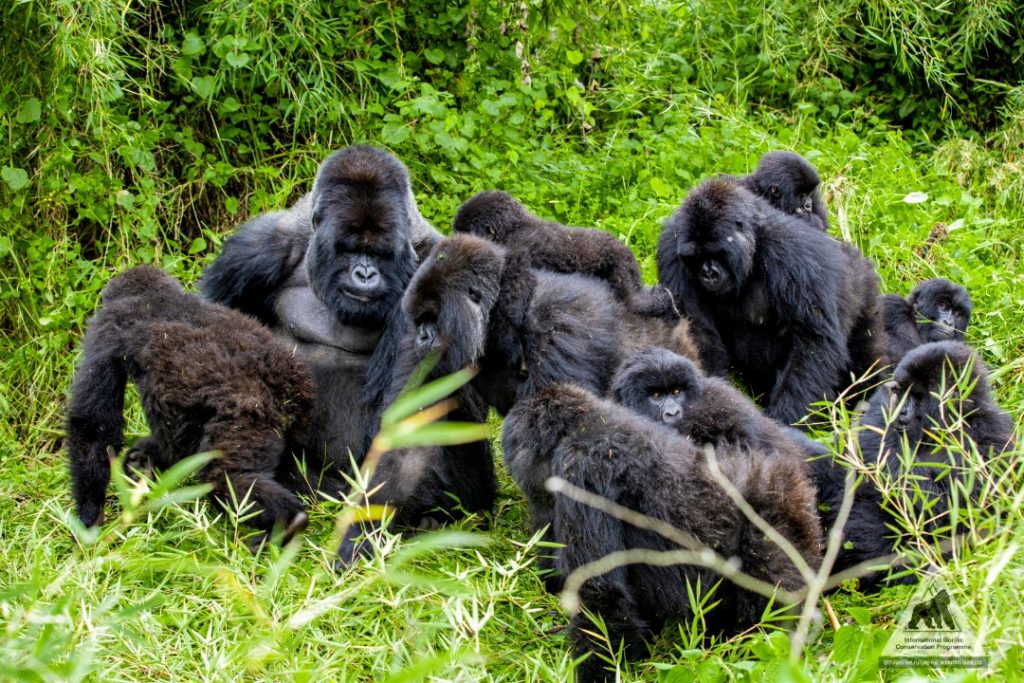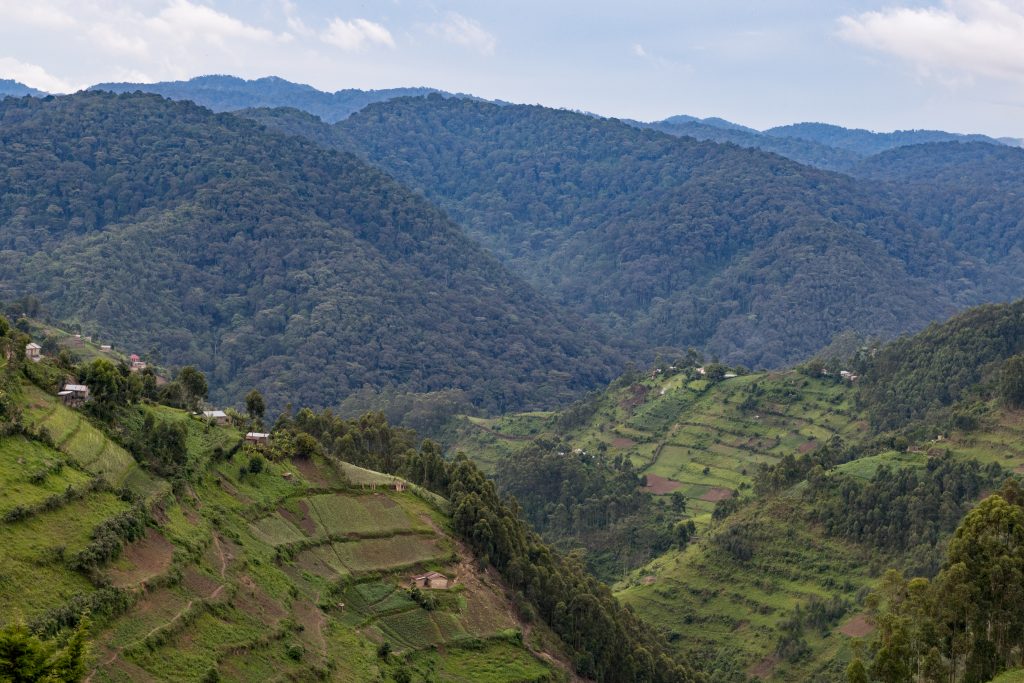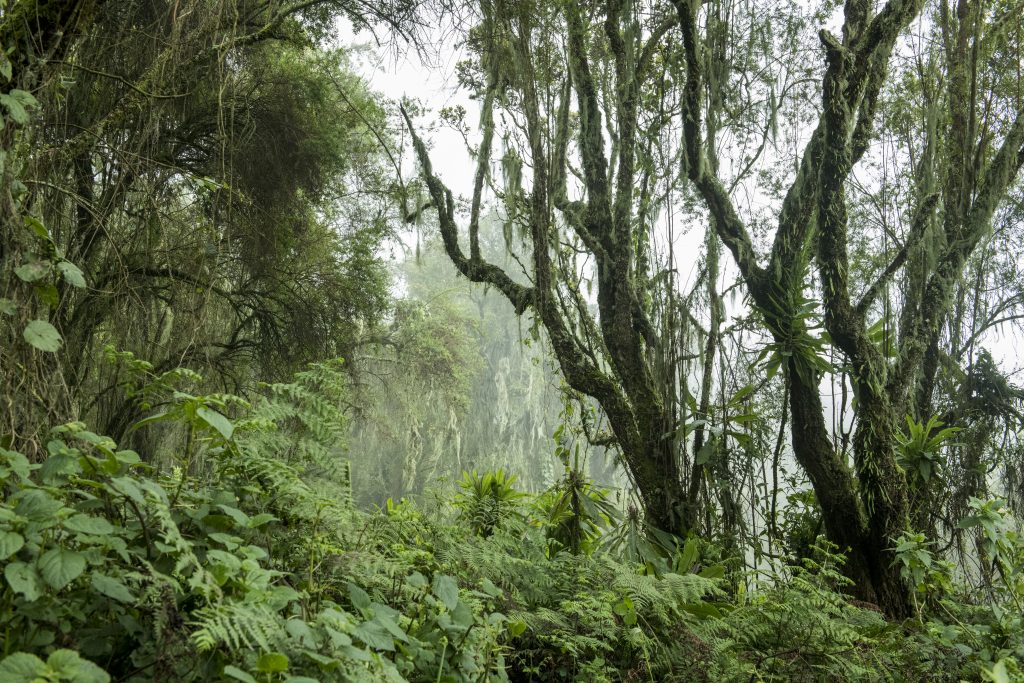How Can the Mountain Gorilla Survive Amidst the Changing Climate?
Blog | 6/12/23
“There is growing evidence that climate change has become one of the major drivers of species extinction in the 21st century. This includes the famous mountain gorillas that are already highly vulnerable to other threats such as habitat loss, indiscriminate poaching, and diseases in Greater Virunga Landscape so says Andrew Seguya, Executive Secretary, Greater Virunga Transboundary Collaboration.

Climate change according to the United Nations’ Intergovernmental Panel on Climate Change (IPCC) refers to long-term shifts in temperatures and weather patterns. This change could be due to several reasons including greenhouse gas emissions and deforestation. Climate change has several effects including severe droughts and fires, water scarcity, rising sea levels, flooding, catastrophic storms, and declining biodiversity. Climate change can also affect human and animal health, the ability to grow food, housing, safety, and work (https://www.ipcc.ch/site/assets/uploads/2022/02/PR_WGII_AR6_english.pdf)
Whereas the global temperature has risen by an average of 0.7°C since 1980, many mountain regions have experienced a much higher temperature increase. Apparently, mountain regions heat/warm faster than lowlands. In the Virunga landscape changes in the climate have started to be observed in the form of increased temperatures, seasonal shifts, and changes in rainfall patterns.

Warming of 2.1oC over the past 50 years has been registered in the Virunga landscape, rainfall is less seasonal and interrupted by longer dry spells. Unfortunately, both trends are likely to continue in the future as noted by Edward W. et. al.,2022.
Also, research works in Bwindi Impenetrable National Park indicate that the success rate of fruiting patterns has dramatically decreased with many young fruits withering/dying before maturity. This may affect the food requirements of the mountain gorillas in the long run. Mountain gorillas are almost 100% vegetarian and with such disruptions in vegetation reproductive capacities, the way of life for the mountain gorillas would be affected” says Joseph Arinaitwe, former In-Charge Research and Monitoring Warden Bwindi Mgahinga Conservation Area. “We have also witnessed fatal thunderstorms involving direct striking and sudden death of mountain gorillas by lightning, previously unheard of” Joseph adds.
Mountain gorillas rarely drink water but obtain enough water from their food (60-90%), however a study conducted to investigate if climate change could impact water drinking patterns revealed that mountain gorillas now drink more water during hotter and drier periods than the wet seasons. Drinking water may be an adaptive behavior to climate change that enables mountain gorilla to reduce body temperature and maintain homeostasis according to a study by Edward W. et. al.,2022. Although mountain gorillas are fragile species, they are also thought to be adaptable animals.
Commenting on this pattern, Robert Bitariho Associate Professor from Mbarara University of Science and Technology asserts that the change in climate also comes with other various diseases previously unheard of in the region. Robert explains that an increase in water drinking may lead to higher risk of parasite exposure compromising gorilla health which is likely to affect the gorillas’ reproduction and increase.
Generally, climate change creates additional stress on habitats and ecosystems that are already threatened, which may result in a reduction of the habitat leading to death or the migration of animals. Migration of mountain gorillas would mean increased exposure and interaction with humans and domestic animals at the park. According to Mr. Nelson Guma the Chief Park Warden for Bwindi Mgahinga Conservation Area, change in the movement and ranging patterns of mountain gorillas can increase the risk of zoonotic spillover and the risk of future pandemics.
Ayebare J et al, (2018) on the other hand predicts that climate change is likely to reduce the remaining habitats for endemic species by 75% by 2080. Whereas the rate at which climate change is impacting on the gorillas is still slow, if not quickly and sternly addressed the impact might be severe in 5 -10 years ahead.

“We need to be vigilant through research and actions to ensure that climate change does not reverse the substantial efforts made in the past decades that have made mountain gorillas a rare case of population recovery” – Martha Robbins, Max Planck Institute for Evolutionary Anthropology
In an era of rapid climatic change, it is crucial that we change the way we do conservation. We need to manage the change caused by climate to minimize the loss and impact on the mountain gorilla and its habitat; first, by integrating climate change in all the conservation work that we do and investing as well as promoting climate change-oriented research to accumulate adequate knowledge and understanding on drivers, interactions and impacts of climate change which will be generated to guide conservation and climate change mitigation approaches.
Intensive joint efforts in addressing climate change as a region should also be explored. Strong policies should be put in place where there are not, while strict enforcement of the same must be done to ensure holistic change.
We must encourage everyone, especially those living on the mountain tops and around the mountain gorilla habitat to plant fast growing trees like Grevilia within and at the edge of their gardens, to use renewable energy and practice climate smart agriculture. If all this and more is done, it will enable communities to cope with climate change effects, reinforce resistance and adaptability to the same, while securing the safety and future for mountain gorillas and their natural habitat.




